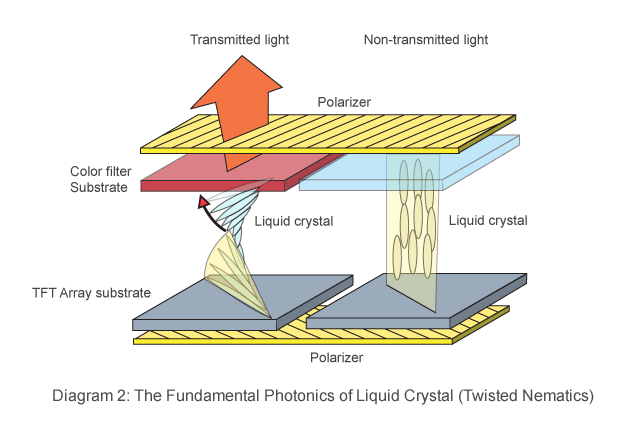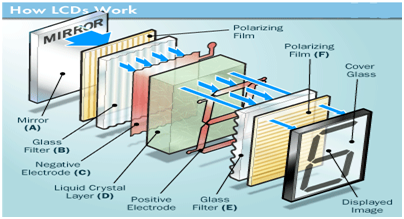Development of LCD Monitors / TV Using Light Polarization Principles
Dear steemians. How are you today? I hope you are feeling well. Today I want to share about development of LCD monitors / TV using light polarization principles.

Few LCD Based Displays
Source
Monitor or television (TV) experienced a significant development process. Initially monitors or TVs are made of cathode ray tube (CRT) to produce moving images. This cathode ray is fired from the picture tube to the outside of the tube. The outside of this tube has been coated with a metal element or plate capable of lightening the light. The development of monitors or TV then made a tremendous progress so that it is no longer using the tube. Even monitor or TVs are now very thin and very light. Currently, we are familiar with monitors or TV Liquid Crystal Display (LCD).
LCD stems from the concept of liquid crystal (LC). LC is a molecular liquid molecule in which this molecule is able to influence the direction of light polarization process. Thus, the molecular behavior is able to change the direction of polarization of the resulting light. LC is a molecular liquid molecule in which this molecule is able to influence the direction of light polarization process. If there is no power break then the polarized light will rotate and is heavily dependent on the thickness of the LC layer.

Source
The electric field capable of making the direction of light polarization has no effect on the thickness of the LC layer. LC that has been given an electric field makes the orientation of molecules more focused and more importantly the direction of light polarization is not affected by other factors. Thus when the light entering the second polarizer makes the direction of the polarization of light will be the same as the direction of the second polarizing axis. This concept is utilized in the process of making the monitor or LCD TV.
An LCD TV basically works on the same principle. Here, the mirror at the back is replaced with fluorescent backlighting. If you look very closely, you can notice that the picture is made from millions of tiny blocks called pixels. Using one liquid crystal per pixel, each pixel can be made to allow or block the light. Thus, a black and white picture can be easily created using “active-matrix” technique. Basically, tiny switching transistors and capacitors are arranged in a matrix on a glass substrate. The rapidly switch the LCD’s pixels on or off. But, how an LCD produces colorful pictures? To produce colorful images, each pixel actually consists of three sub-pixels. Red, green and blue color filter is applied to each sub-pixel. By controlling each pixel to glow red, green or blue, a colorful RGB picture is produced. Source

LCD Layered Diagram
Source
Utilization of light polarization properties make LC developed for human needs so as to produce display known as LCD. The LCD monitor or TV basically consists of several layers of very thin material where the main components are polarizers and analyzers.
As mentioned above that we need to take two polarized glass pieces filter in the making of the liquid crystal. The glass which does not have a polarized film on the surface of it must be rubbed with a special polymer which will create microscopic grooves on the surface of the polarized glass filter. The grooves must be in the same direction of the polarized film. Now we have to add a coating of pneumatic liquid phase crystal on one of the polarized filter of the polarized glass. The microscopic channel cause the first layer molecule to align with filter orientation. When the right angle appears at the first layer piece, we should add a second piece of glass with the polarized film. The first filter will be naturally polarized as the light strikes it at the starting stage. Source

Working of LCD
Source
Monitors or LCD TVs are well known to date despite being replaced by monitors or TVs with cutting-edge technology. Currently, the monitor or TV has emerged using the principle of light emitting diode (LED). The LED has several advantages so it is better than LCD. Among them have better contrast levels, more flexible image production, and better color accuracy than LCD.
Reference
- http://blog.electricalcommunity.com/crt-vs-lcd-monitor/
- https://www.elprocus.com/ever-wondered-lcd-works/
- http://www.innolux.com/Pages/EN/Technology/TFT_LCD_EN.html
Bahasa inggris tingkat tinggi, saya cuma tau ini ngomongin lcd.
Hahaha... tanya mbah google